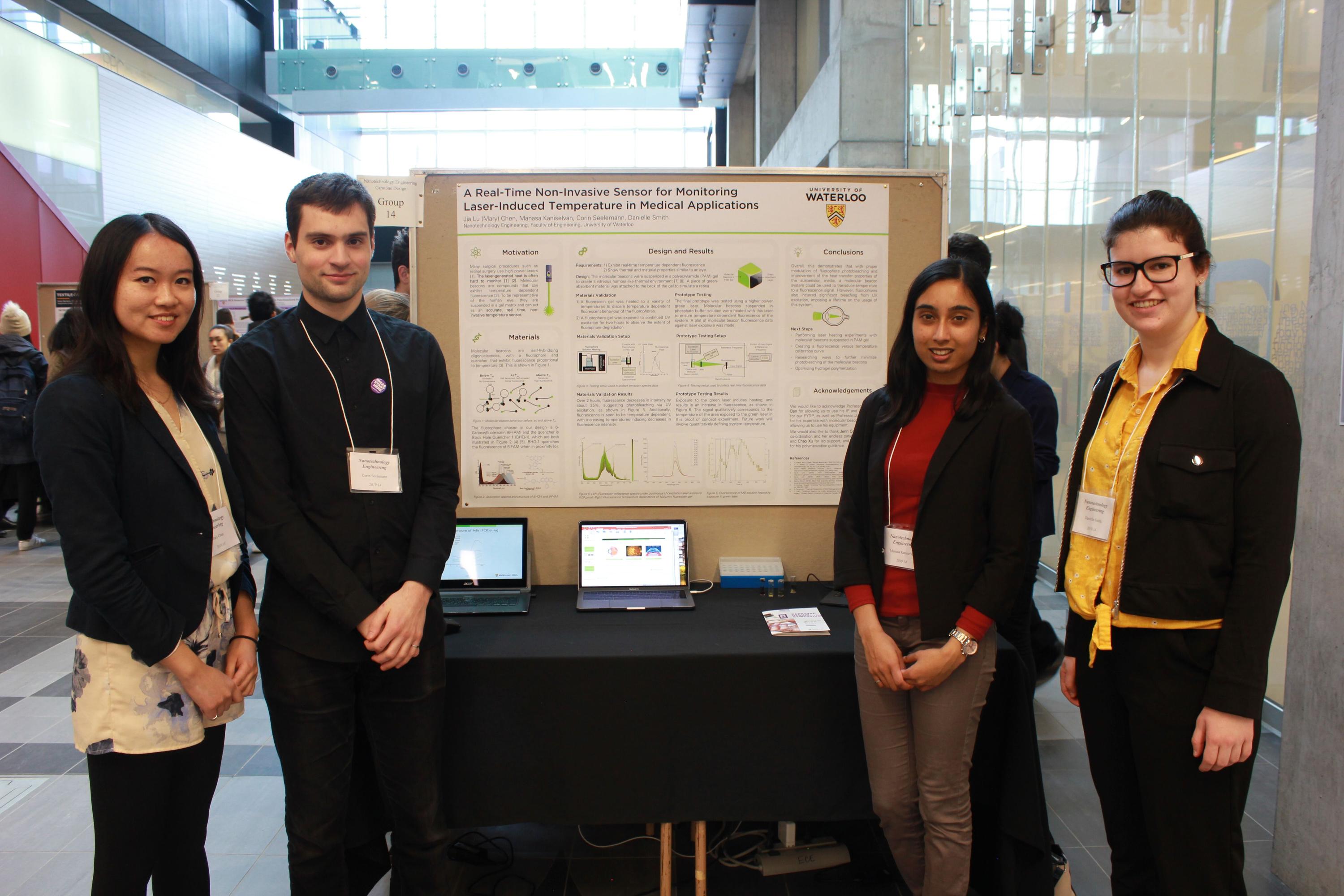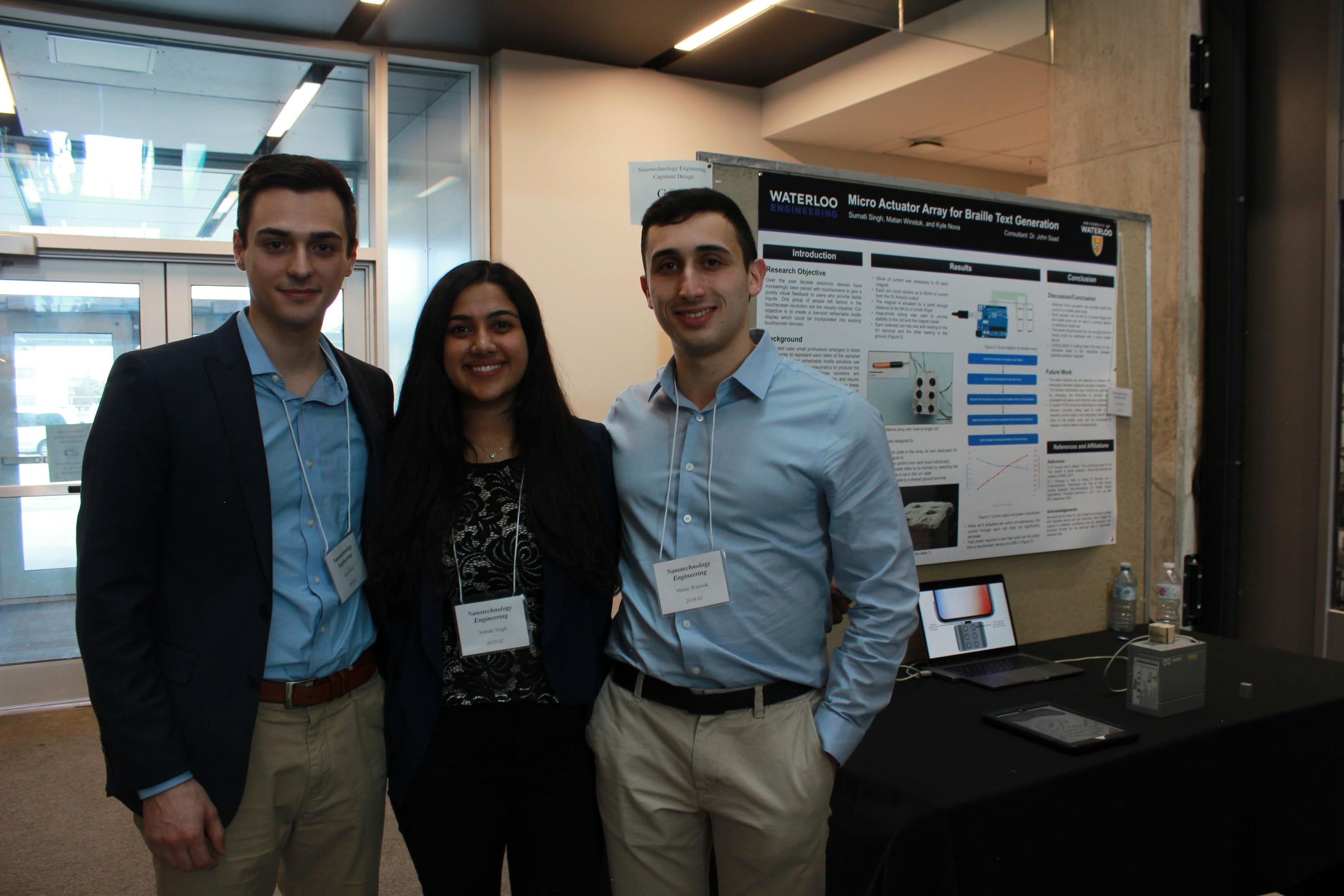Nanotechnology innovation on display at Capstone Design Symposium
Engineering 7’s dynamic new meeting space provided the perfect setting for the Nanotechnology Engineering Capstone Design Symposium. The event, held on March 22, gave twenty-two teams of fourth-year nanotechnology engineering students the opportunity to present their Capstone Design projects to potential employers, industry representatives, faculty, family and friends.
The annual event is the culmination of a two-year capstone project that provides graduating students with hands-on opportunities to use what they’ve learned in the classrooms and on co-op jobs. Each team chose a real-world problem, conceptualized and developed a solution, and presented its research and prototype confidently to laymen and experts alike.
The project work and its presentation reinforce the concepts of team work, project management, research and design. Each group worked with guidance from course instructors Dr. Chris Backhouse and Jenn Coggan, and one faculty mentor who has expertise in their design problem.
The NE students’ capstone projects provided solutions to a wide range of problems that are representative of the challenges our society faces – excessive amounts of ‘recyclable’ coffee cups in the landfills, nutrients in lakes and unwanted tattoos on bodies, as well as insufficient refrigeration options in developing countries, user-friendly electronic devices for people with vision limitations, and lithium-ion battery recycling procedures, among many more.
Find out more about all of the exciting projects presented at the 2019 Nanotechnology Engineering Capstone Design Symposium.
Award Winners
Special congratulations go to the following teams that won awards for their excellent research and presentations at the Symposium:
Nantoechnology Engineering Program Awards
First
Group 17, for their portable monitoring device to prevent algal blooms in lakes.

Michael Mierzejewski, May Yin (Ashlyn) Low, Sarah Wen-Hui Chan and Robert Bennett
Second
Group 14, for their real-time, non-invasive sensor for monitoring laser-induced temperature in medical applications.

Mary Chen, Corin Seelemann, Manasa Kaniselvan and Danielle Smith
Third
Group 5, for their optical fibre-based slippage sensor design.

Calder Kitagawa, Darshan Parmar, David Rousso and Vyshakh Sanjeev
GM Award
Group 2, for the micro actuator array they created to generate braille text for electronic devices.

Kyle Nova, Sumati Singh and Matan Winstok
Structur3d Printing Award
Group 23, for the dissolvable microneedle patch they developed to remove unwanted tattoos.

Andrew Lofts, Sabrina Zaccaro, Calena Marchand and Owen Mototsune